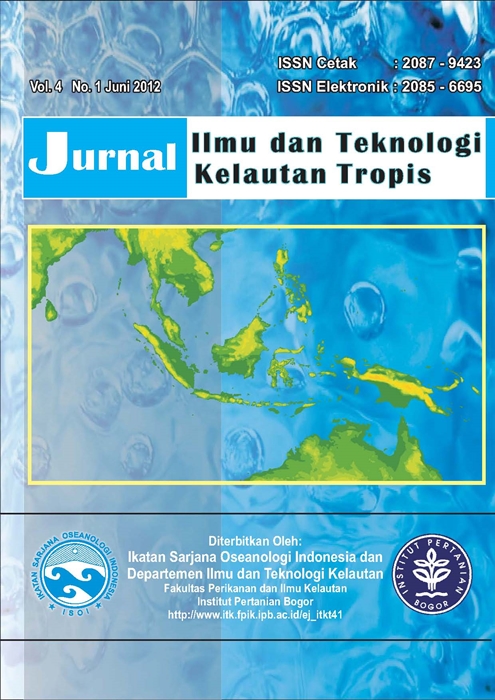Abstract
Emperor snapper Lutjanus sebae is one of marine fishery commodities with high economic value, therefore capture rate of this fish is very high. To maintain its sustainability in nature, the culture of this species should be done in proper manner to support their conservation. This study was aimed to determine the culture technology of emperor snapper L. sebae. The eggs for this study was taken from wild broodstocks that have been domesticated in concrete rearing tank. Larval rearing was done in 500 liter polyethylene tank placed in hatchery. Phytoplankton Nannochloropsis oculata was used during larval rearing period. Larvae was fed with zooplanktons such as rotifer Brachionus rotundiformis and copepod Tisbe holothuriae in the beginning of rearing and artemia starting in day 16. Observed parameters were absorption of endogenous energy, preferrence of food, larval growth and survival rate. The result indicated that total length of newly hatched larvae were 2,44-2,63 mm, while yolk sac and oil globule were 179x10-3 - 183 x10-3 mm3 and 0,66x10-3 - 0,67x10-3 mm3, respectively. Yolk sac was absorbed at 60 hours after hatching, while oil globule almost totally absorbed at 80 hours after hatching. Live food rotifers were dominantly preferred by larvae until 10 days old, while copepods and artemia were preferred after 12 and 16 days. Larval rearing period was 22-29 days at water temperature 28.5-30.0°C. Survival rate of larvae were between 1.5 until 2.1%, while juveniles were 84.00-100.00%.
Keywords: Emperor snapper, L. sebae, culture technology
Authors
This work is licensed under a Creative Commons Attribution 4.0 International License.
Jurnal Ilmu dan Teknologi Kelautan Tropis i is an open-access journal, meaning that all content is freely available without charge to the user or their institution. Users are allowed to read, download, copy, distribute, print, search, or link to the full texts of the articles in this journal without needing to request prior permission from the publisher or the author.
All articles published by Jurnal Ilmu dan Teknologi Kelautan Tropis are licensed under the Creative Commons Attribution 4.0 International License. This allows for unrestricted use, distribution, and reproduction in any medium, provided proper credit is given to the original authors.
Authors submitting manuscripts should understand and agree that the copyright of published manuscripts is retained by the authors. Copyright encompasses the exclusive rights of authors to reproduce, distribute, and sell any part of the journal articles in all forms and media. Reproduction of any part of this journal, its storage in databases, and its transmission by any form or media is allowed without written permission from Jurnal Ilmu dan Teknologi Kelautan Tropis.


